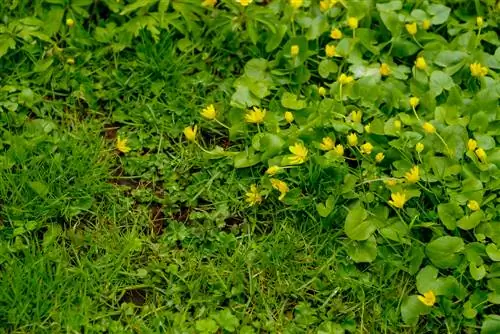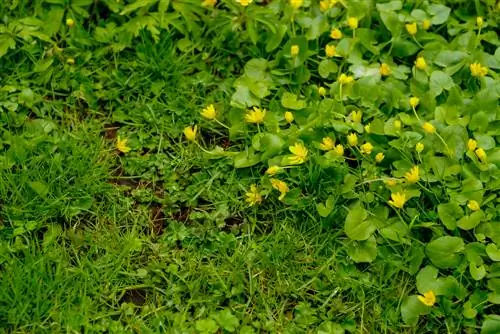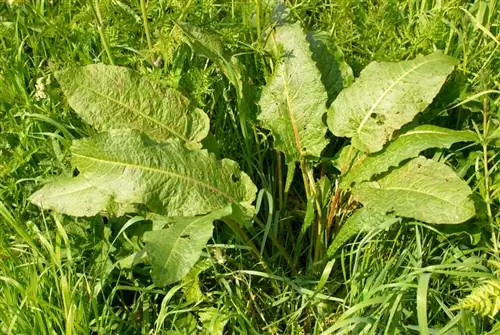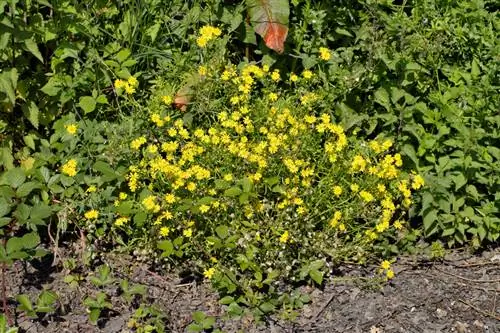- Author admin [email protected].
- Public 2023-12-16 16:46.
- Last modified 2025-01-23 11:22.
Pennigkraut is often planted as a fast-growing plant on the banks of the garden pond or as a ground cover. If the plant feels comfortable at the location, it can spread uncontrollably. Combating it is not difficult, but it requires consistency.

How can you combat pennywort effectively?
In order to combat the rampant pennywort, you have to weed consistently. Carefully pull the mother plant and side shoots out of the soil. The rapid growth can be inhibited by regularly cutting back the long shoots.
How do I recognize the pennywort that needs to be controlled?
The main characteristic of pennywort (Lysimachia nummularia) is its rapid growth. Using long runners that form their own roots, the perennial, which is only five centimeters high, spreads out like a mat in a very short time.
Other identifying features:
- Round, juicy green leaves with a diameter of between one and three centimeters.
- Cup flowers appearing from May to July.
- These are bright golden yellow in color and are reminiscent of small coins.
- Prefers moist locations with high nutrient content.
How can I combat the rampant pennywort?
Pennigweed canonly be controlled by consistent weeding. Since the plant spreads by means of runners, but does not form taproots and does not sprout from root residues, this work is not quite as laborious:
- Carefully pull the mother plant with all side shoots out of the previously loosened soil.
- Weed regularly to prevent the emerging seeds from developing into flowering perennials.
How do I inhibit the growth of pennywort?
Be sure to cut back the long shootsof the specifically planted pennywort. This is the only way to prevent the ground cover from spreading uncontrollably. It overgrows beds and can eventually be found in the lawn. This is particularly important if you cultivate the pennywort in the banks of the pond without additional borders, because it creates a more beautiful frame.
Why is fighting pennywort so difficult?
Since pennywort is wild in temperate climates,seedsitseeds on its own,even if it was never planted. It thrives on almost any soil and even at altitudes of up to 1300 meters.
Pennigkraut is rarely attacked by pests and even snails avoid it. That's why you can't hope for help from nature when banishing you from the garden.
Tip
Pennigkraut is edible
When fighting pennywort, make it easy and eat up the weeded plants. The leaves taste very aromatic and are ideal as an addition to herb quark, salads or plain on a sandwich. You can use the flowers as a tasty and attractive salad addition.






